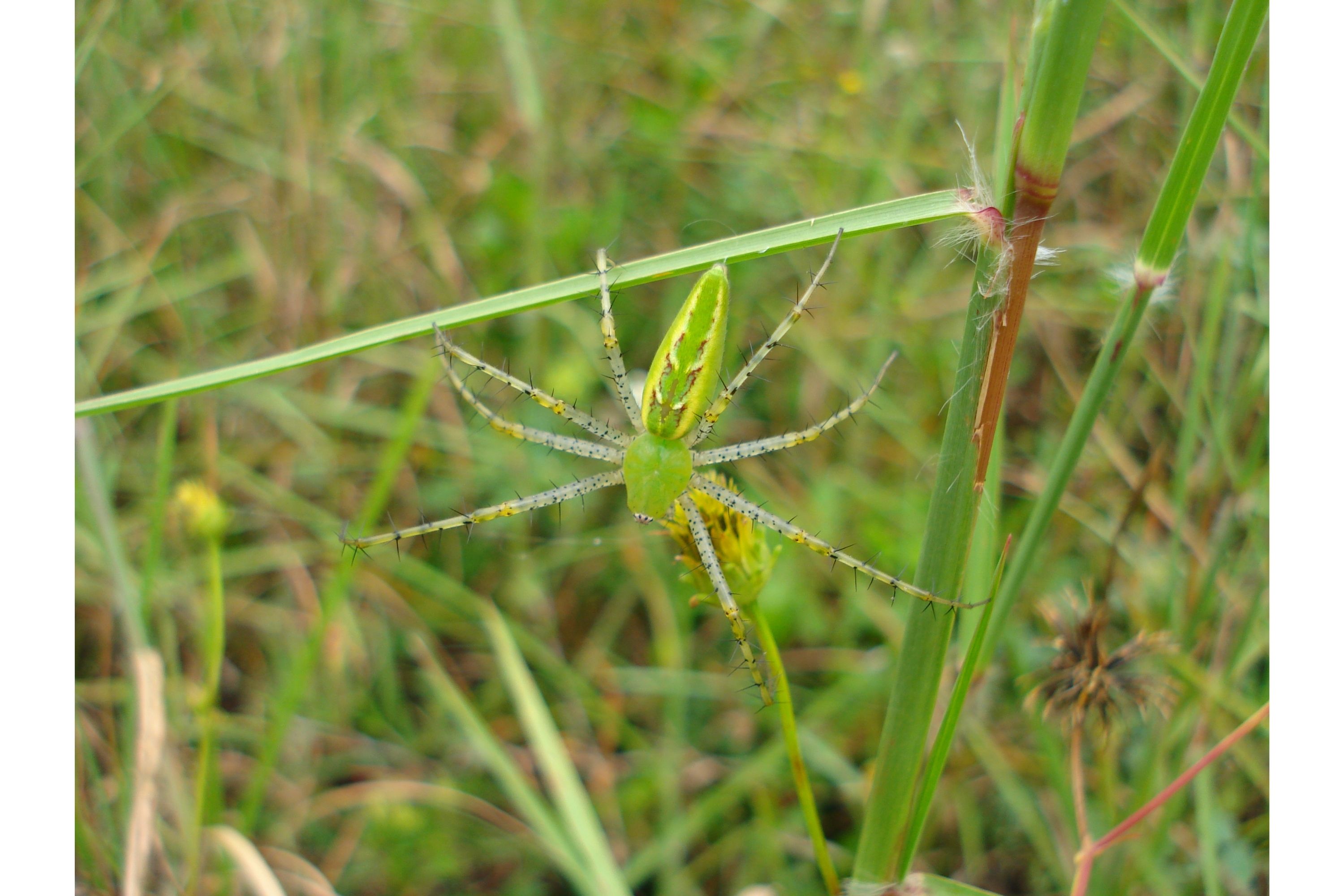Green lynx spider
(Peucetia viridans)

Description
Peucetia viridans, the green lynx spider, is a bright-green lynx spider usually found on green plants. It is the largest North American species in the family Oxyopidae. This spider is common in the southern U.S., Mexico, Central America, and in many West Indie islands, especially Jamaica. The body of the female may be as much as 22 millimeters (0.87 in) long. The male is smaller, being more slender and averaging 12 millimeters (0.47 in) in length. There often is a red patch between the eyes, with a few red spots on the body. The eye region is clothed with white appressed hairs. The dorsal surface of the abdomen bears about six Chevron-like marks with the centres pointing forward. The legs are green to yellow, bearing long black spines such as appear on the legs of most species of Oxyopidae, and with a generous scattering of black spots. Peucetia viridans is confusingly similar to Peucetia longipalpis, the other Peucetia species to occur in the United States, but Peucetia longipalpis tends to have a shorter, fatter, more domed abdomen, with less pronounced markings in its upper surface. Late in the season Peucetia viridans is prone to change its colour from predominantly green to paler yellow, typically with streaks of reddish, suggesting degradation of the tetrapyrrole pigment in the blood. Gravid females may change their color to fit their background. This takes about 16 days. The female constructs one to five 2-centimeter (0.8 in) egg sacs in September and October, each containing 25 to 600 bright orange eggs, which she guards, usually hanging upside down from a sac and attacking everything that comes near. Remarkably, one of her means of defense is to squirt (spit) venom from her chelicerae, sometimes for a distance of about a foot (300 mm). The eggs hatch after about two weeks, and after another two weeks fully functional spiderlings emerge from the sac. They pass through eight instars to reach maturity. The green lynx spider very seldom bites humans, and when it does, its venomous bite, though painful, is not deadly but may cause surrounding swelling (edema) up to 7"-10" in diameter. The species is primarily of interest for its usefulness in agricultural pest management, for example in cotton fields.
Taxonomic tree:







